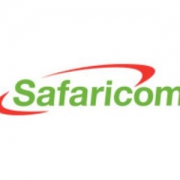Will Western Union Be the Catalyst for Mobile Money in Latin America and the Caribbean?
The most well-known mobile money implementation in Latin American and the Caribbean has been in Haiti. But with a large and diverse population of mobile phone users (460 million!) in Latin America and an estimated 35% of adults with an established bank account, it would seem clear that mobile money (or mobile financial services – MFS) should have taken off. Yet, besides Haiti, MFS have been almost none existent.
Many arguments have been made for this. Back in 2010, the GSMA interviewed Serge Elkiner, President and Founder of YellowPaper. YellowPaper developed technology for users to access MFS in Colombia, Peru, Ecuador, Guatemala, Dominican Republic, Bolivia, Haiti, and Panama. He mentioned that one of the reasons for the lagging of MFS in Latin America is government regulation. Other reasons include a lack of desire by MNOs to launch MFS products, money transfer services not adopting mobile transfer platforms, the already well-established financial service sector in the region, and the size of the many of the economies throughout the region.
Recently there have been movements in MFS in the region. As mentioned before on this blog, Red Cloud Technology along with BlueOrchard and other has invested $1.2 million in Nube Roja, Bolivia’s first mobile money platform. Telefonica has teamed with MasterCard on a joint venture last year to expand financial services in 12 Latin American countries. Finally Western Union has entered the mobile transfer market in Latin America by partnering with Tigo in Paraguay. Customers using Giros Tigo (Tigo Cash) will be able to receive money from other countries via their mobile phones. The service will begin in Paraguay and then be implemented in other countries in the region on a rolling basis. Giros Tigo has been providing MFS for over 18 months and the partnership with Western Union is an addition to the services provided to customers.
But MFS move forward in the region, what will be the catalyst to move it to wide spread adoption? In Haiti, the catalyst was the investment made by the Gates Foundation. Clearly there was a need for the people in the country to access formal financial services. But until there is a business case (ie profit can be made), the private sector will not move quickly enough to provide products and services that can scale and are user focused.
With remittances playing such a large role in the economies of Latin America, the ability to receive them via mobile phones could be the spark. On annual basis, Latin America and the Caribbean receive more than $60 billion in remittances. But it has continued to be processed through the traditional practices of Western Union and MoneyGram. Western Union has been making a push mobilize their services (as seen above), but time will tell if it can create the spark for individuals to start adopting MFS in Latin America.






































